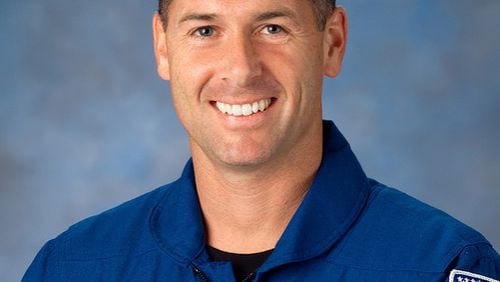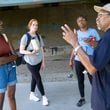Growing up during a time of moonwalks and the Space Race, Shane Kimbrough dreamed of becoming an astronaut. His grandparents lived across from the Kennedy Space Center and took him to see anything being launched. “I think every little kid my age wanted to be an astronaut,” says the 49-year-old, who grew up in Smyrna, graduated from The Lovett School and has a master’s from Georgia Tech. Maybe, but Kimbrough actually did it and is one of only 44 American astronauts. And now little kids watch him fly into space from the spot where he used to stand with his grandfather. In April, Kimbrough returned after spending six months on the International Space Station. This whole astronaut thing may sound like fate but Kimbrough says it almost didn’t happen. He was busy rising through the ranks of the military when he discovered he could have the best of both worlds.
Q: Why did you join the military and didn’t you see combat?
A: I decided to attend the U.S. Military Academy — they recruited me to play baseball. After West Point, I was selected to go to flight school and then lucky enough to be selected to learn to fly Apache helicopters. In the middle of that, the Gulf War kicked off. I was deployed and made a platoon leader in charge of six Apaches. I learned a lot about people and myself.
Q: What did you learn?
A: I was a young kid and fired up about going to war. That is not the right attitude. A lot of bad comes with war. All the things I was taught at West Point came up — being a leader, setting an example, being selfless, having discipline. I was in charge of people who had been in the Army way longer than I had and managing them meant pretty much getting out of their way.
Q: The Army was your path to NASA, right?
A: When I made the decision to go to West Point, I thought my dream of being an astronaut was gone. Then I ran into an Army officer who was an astronaut and that rekindled the flame. When NASA selected me in 2004, about half of the astronauts were in the military. I retired from the military in 2015 after 26 years but my job didn't change, just who writes my paycheck.
Q: How has your adventurous life been for your wife and three daughters?
A: Not easy, to be honest. I do get their buy-in before doing anything.
Q: Talk about your space missions.
A: I have been on two. The first was in 2008 on the Space Shuttle Endeavour, lasted 16 days and was incredible. We fixed a lot of things on the Space Station. I was lucky enough to do two spacewalks. The mission I just returned from lasted 173 days and I got the chance to do four spacewalks. We also did about 300 experiments submitted by scientists from all over the world.
Q: Are spacewalks cinematic?
A: It sounds like we do these things all the time but they are very, very rare. Being outside is an extremely dangerous environment. The typical spacewalk is seven hours. Your spacesuit is actually your 300-pound personal spacecraft. When we are out there, we are fixing things or installing new computer equipment. You have to be extremely disciplined and focused not to damage yourself or the equipment.
Q: Do you get to look around?
A: Maybe a few minutes when the folks in mission control are talking. I don't see a lot of stars because of the light emitting from the Space Station, which goes around the Earth every 90 minutes so we get a sunrise and a sunset every 45 minutes. That is pretty cool. We always see our planet whether it is day or night. It is absolutely phenomenal.
Q: Given all the division on Earth, what’s it like being on the Space Station with astronauts from other countries?
A: We as a nation could not do the Space Station program by ourselves. We need Russia and Japan and the European countries. And they need us. It is a great model for society in general.
Q: What do astronauts do when you aren’t in space?
A: Unfortunately, most of our time is not in space. We work technical jobs and support our colleagues who are launching and up there. We do a lot of public speaking engagements, trying to get younger kids inspired about STEM careers. It is certainly a long shot for anyone to be an astronaut but there are thousands of people working at NASA space centers. I would encourage everyone to follow their passion, whether you want to be an astronaut or a doctor or an English teacher.
About the Author






